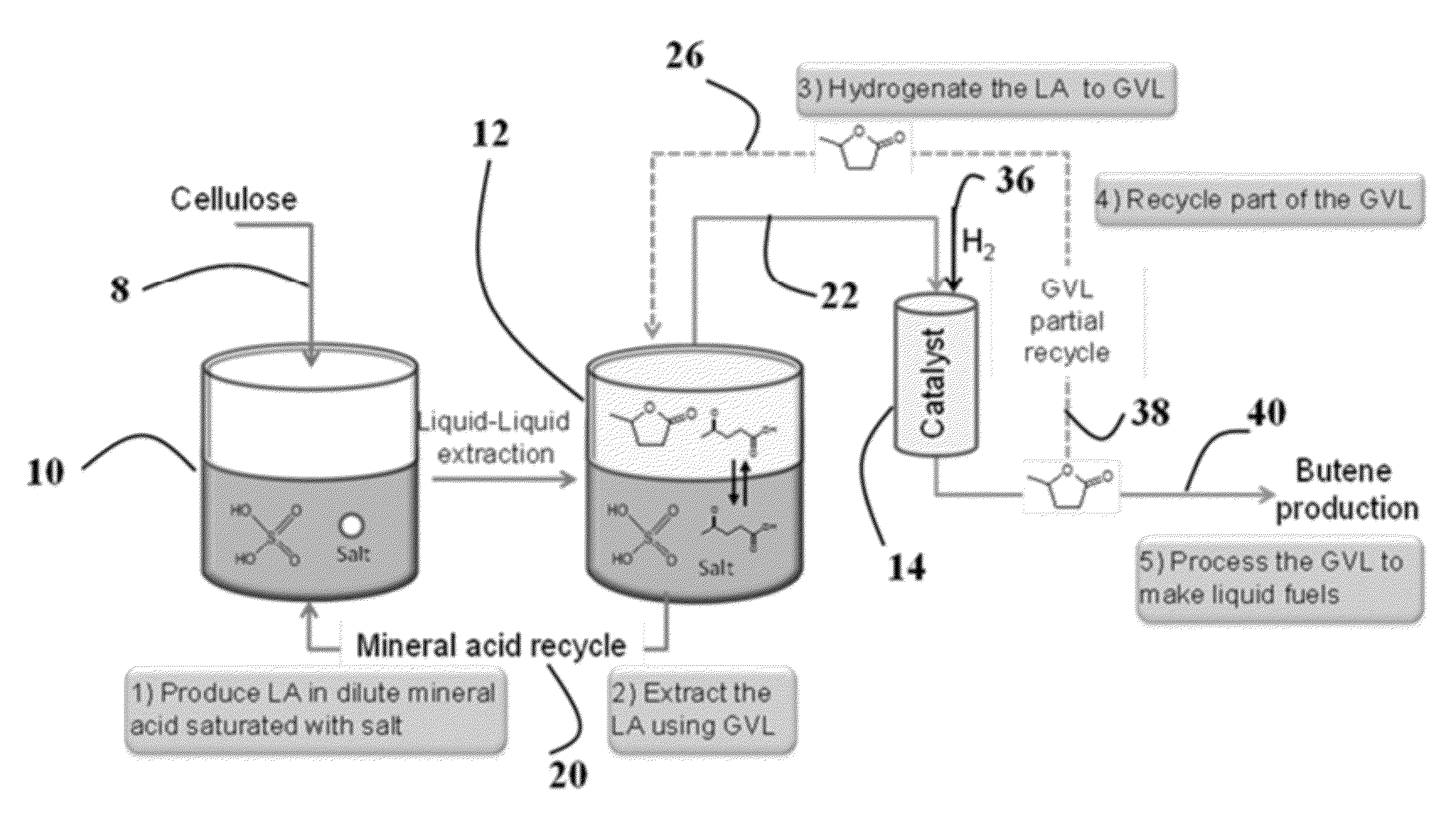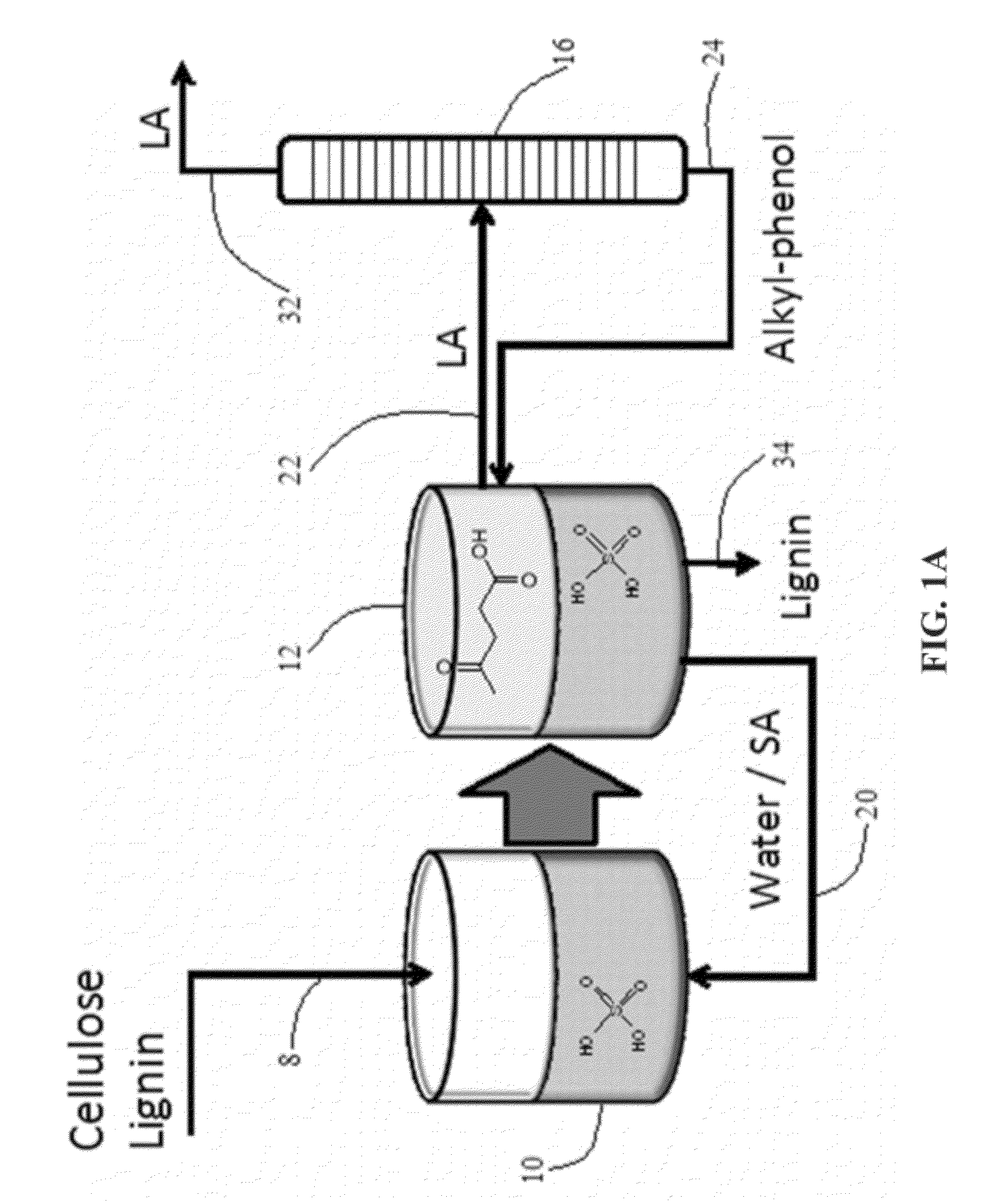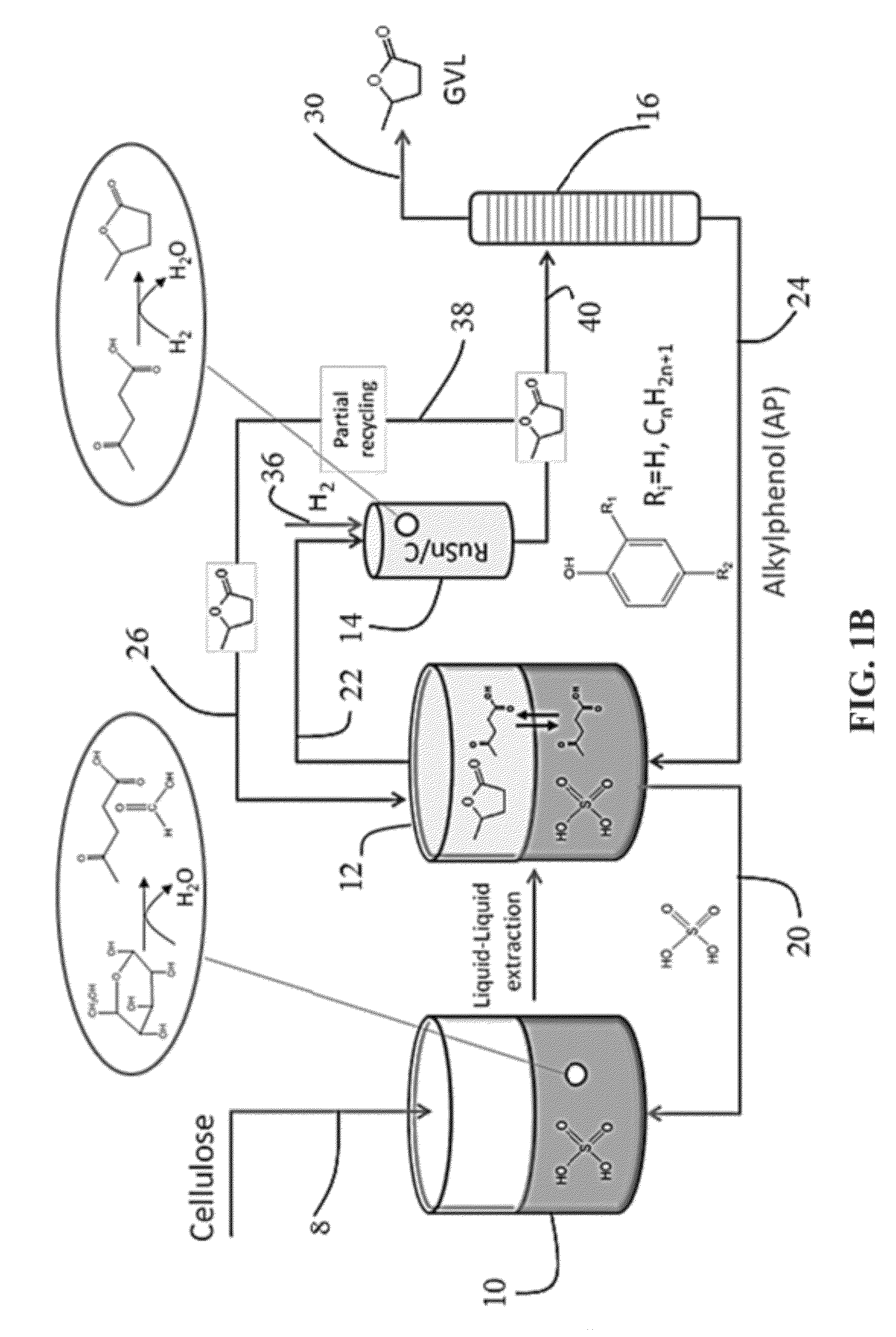Solute-enhanced production of gamma-valerolactone (GVL) from aqueous solutions of levulinic acid
a technology of gamma-valerolactone and levulinic acid, which is applied in the preparation of carboxylic compounds, organic chemistry, chemistry apparatus and processes, etc., can solve the problems of complicated fuels and chemicals from biomass, and conventional approaches to make useful chemicals from biomass typically require very difficult and economically unfavorable separation and purification steps, etc. enhancing the concentration of gamma-val
- Summary
- Abstract
- Description
- Claims
- Application Information
AI Technical Summary
Benefits of technology
Problems solved by technology
Method used
Image
Examples
examples
[0084]The following Examples are included solely to provide a more complete disclosure of the method described and claimed herein. The Examples do not limit the scope of the claims in any fashion.
1. Materials and Methods:
[0085]1.1. Liquid-Liquid Extractions
[0086]1.1.1. Simulated Feed
[0087]Liquid-liquid extractions were carried out in 20 mL glass vials. Typically, 4 g of aqueous solution with 0.5 M sulfuric acid (Sigma-Aldrich, St. Louis, Mo., USA, >96%), LA (Sigma-Aldrich, St. Louis, Mo., USA 98%), FA (Sigma-Aldrich, 98-100%) and / or GVL (Sigma-Aldrich, >98%), in the concentrations indicated, plus 4 g of the indicated AP (2-sec-butylphenol (Alfa Aesar, Ward Hill, Mass., USA >98%) 4-n-pentylphenol (Sigma-Aldrich, >98%), 4-n-hexylphenol (Acros Organics, Geel, Belgium, 98%) and GVL, when used, were added to the vial and shaken vigorously for one minute. After the two phases separated, the organic top phase contained SBP, GVL, LA and FA, and the aqueous bottom phase contained water, sulf...
PUM
| Property | Measurement | Unit |
|---|---|---|
| partition coefficient | aaaaa | aaaaa |
| partition coefficient | aaaaa | aaaaa |
| partition coefficient | aaaaa | aaaaa |
Abstract
Description
Claims
Application Information
 Login to View More
Login to View More - R&D
- Intellectual Property
- Life Sciences
- Materials
- Tech Scout
- Unparalleled Data Quality
- Higher Quality Content
- 60% Fewer Hallucinations
Browse by: Latest US Patents, China's latest patents, Technical Efficacy Thesaurus, Application Domain, Technology Topic, Popular Technical Reports.
© 2025 PatSnap. All rights reserved.Legal|Privacy policy|Modern Slavery Act Transparency Statement|Sitemap|About US| Contact US: help@patsnap.com



